Exploring the maximum TDP upper limit
Now, of course, you could go down the path of least resistance and interpret the test on a CPU with a maximum of 100 to 130 watts of heat dissipation. Nice for possible permanent chart comparisons, bad for the buyer, who perhaps has completely different interests and would have liked to know what else is going on. To control the fans, we use a motherboard whose automatic fan control we have configured so that the full fan speed is at approximately an average 88°C core temperature, which is still at approx. 63 to 64°C.
We deliberately chose the socket 2011 and an older (still soldered) Core i7-5930K, because with this CPU we have the complete power range of approx. 75 to 250 watts without any problems. You don't have to burden such a 240 solution without, if necessary, have to hold your ears. Unlike graphics cards, the cooler is on the heat spreader and not on the bare chip. That's why it's hard to compare. Above 65°C on the package, the CPU starts to throt, unfortunately.
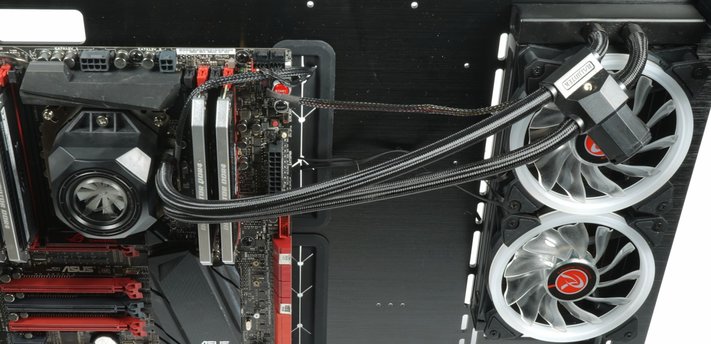
We generate constant loads, which we also monitor and measure, over a period of at least 45 minutes each. This is enough to produce a complete heat distribution and to find the final balance. The results show that the performance up to 150 watts is really good and thus the fans as a direct result do not trigger an acoustic inferno. From approx. 200 watts then it gets a bit louder in the carton and at 250 watts of dissipating power it really rattles in the box. It doesn't work yet, but the fans have arrived in long-distance sprint mode. Technically, there is no more to it.
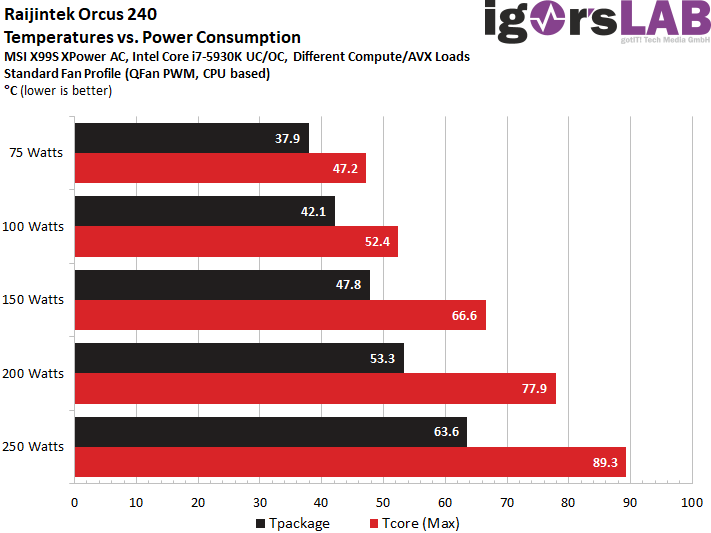
Performance comparison
But without a direct comparison, we do not want to evade responsibility. But we don't want to test a Core i7-7700K or other low-energy lightweights, which you cool down with every AiO like with an applied, wet thumb and a facial expression full of nonchalance. But what happens to the other test objects at 250 watts, which is also generously roasted? Here is the answer:
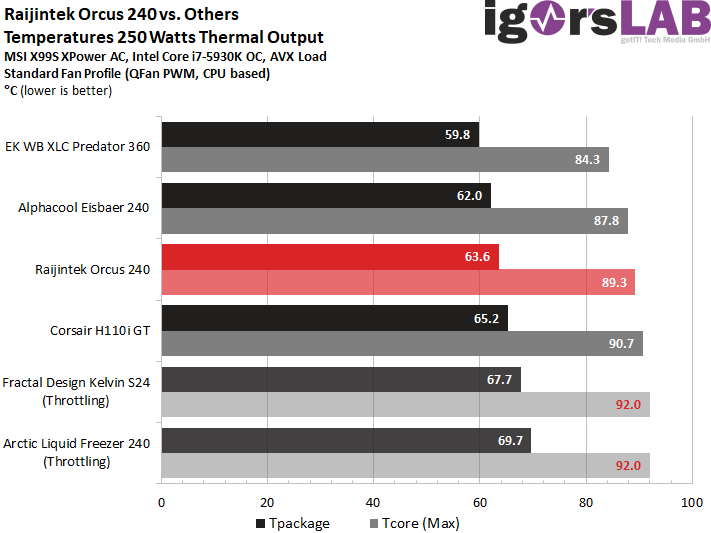
The 360 AiO cooling with the three fans is of course the fastest, there was actually no doubt in the run-up to the event. It gets more interesting in the midfield. The Alphacool Polar Bear 240 is with approx. 115 Euro hardly more expensive, but keeps the CPU a bit cooler. The noise emission is very similar at 250 watts, but the RGB light garland is missing and a hub is also sought. However, you can hear the pump of the orcus in the idle even less. Both products are therefore roughly at the same level of performance, if you leave the light aside.
The Corsair H110i GT is already noticeably more expensive at over 120 euros, despite the larger radiator, as well as the larger fans slightly weaker on the chest and even a little louder. Again, at least the pump lights up and there is nothing throttelt either. In contrast to the other two AiO solutions, all of which run in a simmering manner in the thermal GAU. Here would be the end at 200 watts, but we haven't tested that. Unlucky and loud was this pair run to the fireflies parade as well.
Noise emission ("volume")
This allows us to elegantly pass to the measurement of noise. We measure at a distance of 30 cm to the opposite side of the radiator, i.e. on the blowing side. In normal operation of this CPU at approx. 100 watts it is moderate 36.5 dB(A). However, if we look at the frequency analysis, the level caused by the airflow is even lower, because we mainly detect lower-frequency and in the frequency even mostly speed-independent bearing and engine noises, which initially depend on the fan to the radiator and then from there to the housing.
However, this so-called body sound could be reduced very significantly by means of a suitable and appropriate decoupling. Experiments with simple, thick power tape brought almost 2 dB(A) less. Rubber buffers for the screws should achieve even better results here. However, the noise level as such is already good and acceptable in a "buzzier" state and without decoupling. The two last-placed test patterns, which easily drown out the Orcus 240, show that things are also worse.
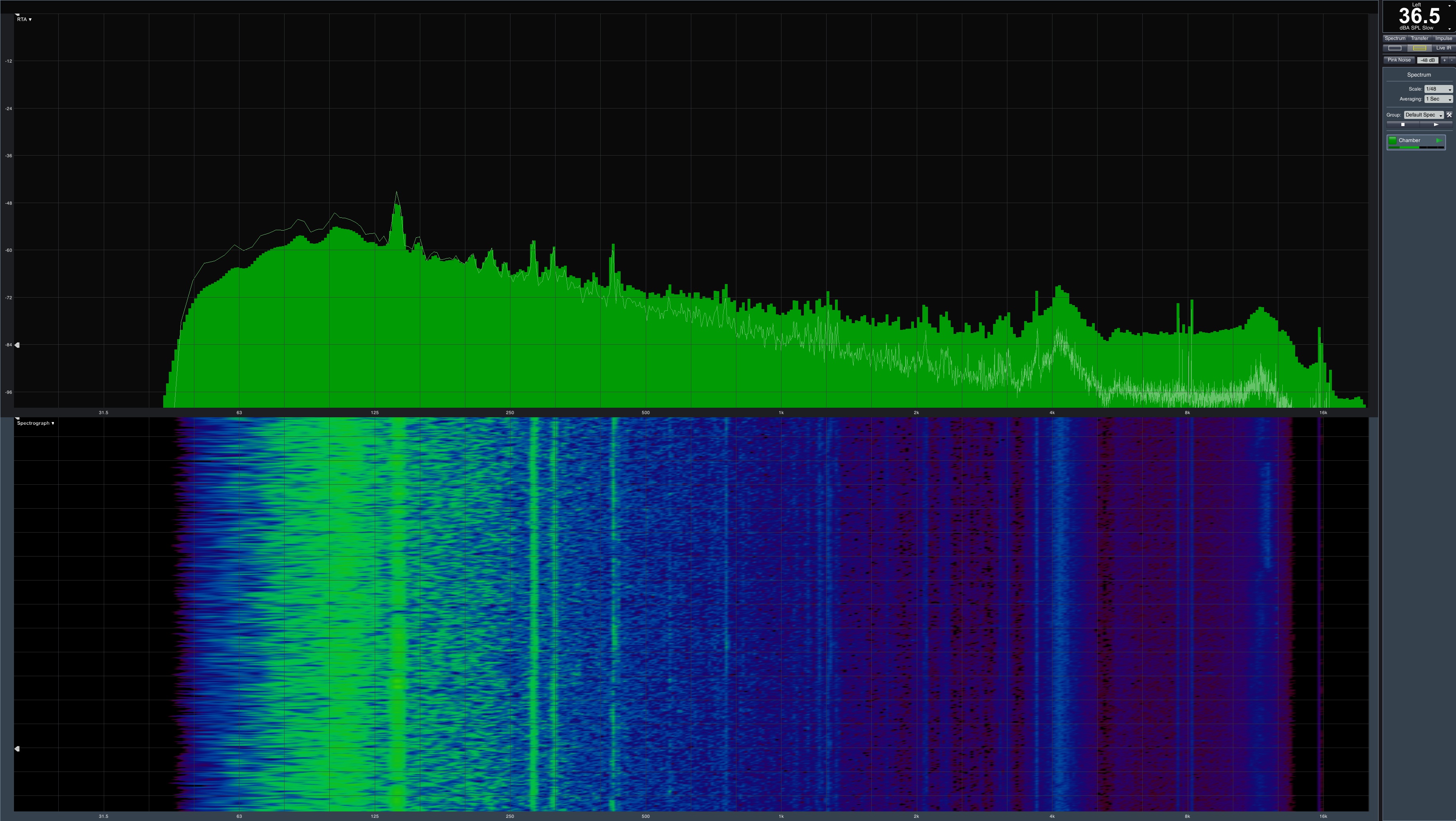
At 250 watts, you can see the vibrations of the drive, which are also transmitted via the body sound, even more clearly and the air noises are now increasing in measurement and audible. Nobody will want such a concert in the long run, but this performance class should be reserved for a real custom loop water cooling anyway. The AiO is not a toy, but caravans and small cars are mutually different. At least on German motorways.
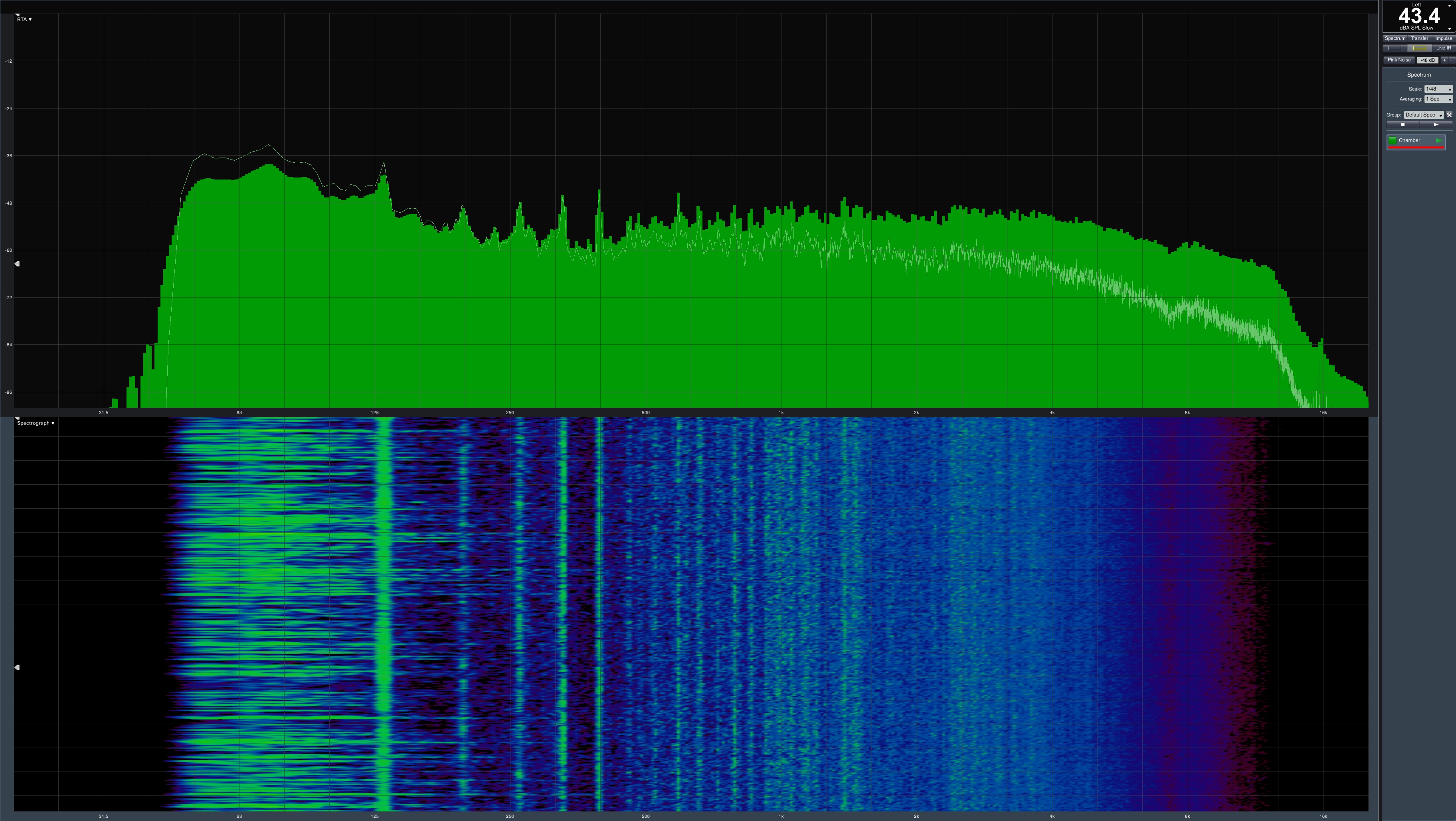
Summary and conclusion
No, the Raijintek Orcus 240 is not a cheap home, but it is cheap and inexpensive. Without the RGB fun, Klaus-Kevin & Co. certainly draw a long nose, because the offer of comparable competitors is huge. But no one in the range of less than 110 euros can shine so beautifully or offers optically rotating gimmicks and the stroke with its countless insertion possibilities. Exactly for this we also award the award, although we have not yet been able to take a long-term test. For this, however, the idea with the pump in the hose is a nice and also quite practical implemented. And the AiO can do what it is supposed to do.
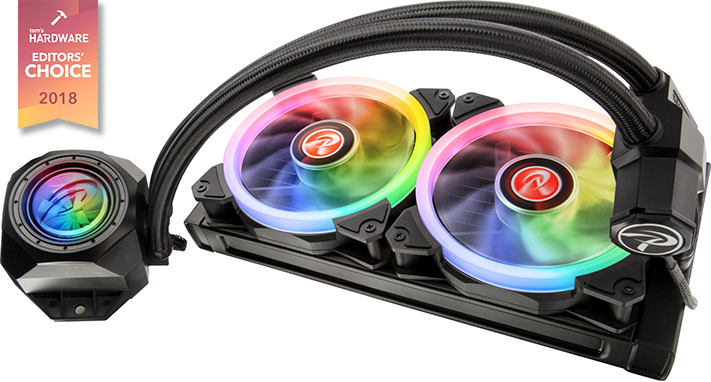
The performance is roughly at the level of comparable solutions, because physics cannot be redefined or even invented. Here, only details make the difference, but it is never too big. On the contrary, in places you make a tick better, but hardly worse. Just another AiO? In principle yes, but at least in beautiful and colorful. As a shining example, representing a whole basket of possible solutions, so to speak. That, too, has charm.
It also goes longer and in the dark
If you think your own fans are better, nicer or just already available anyway, you can access the Orcus 240 Core. For 85 Euros you get the fanless Nackedei then also significantly cheaper, but must also do without the stroke. If you like to have the longest, you will find the fully equipped Orcus 360, which is equipped with approx. 139 Euro. From next week, all products will also be represented in well-assorted German specialist retailers.

















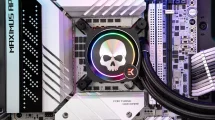













Kommentieren